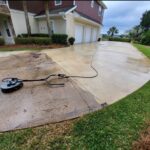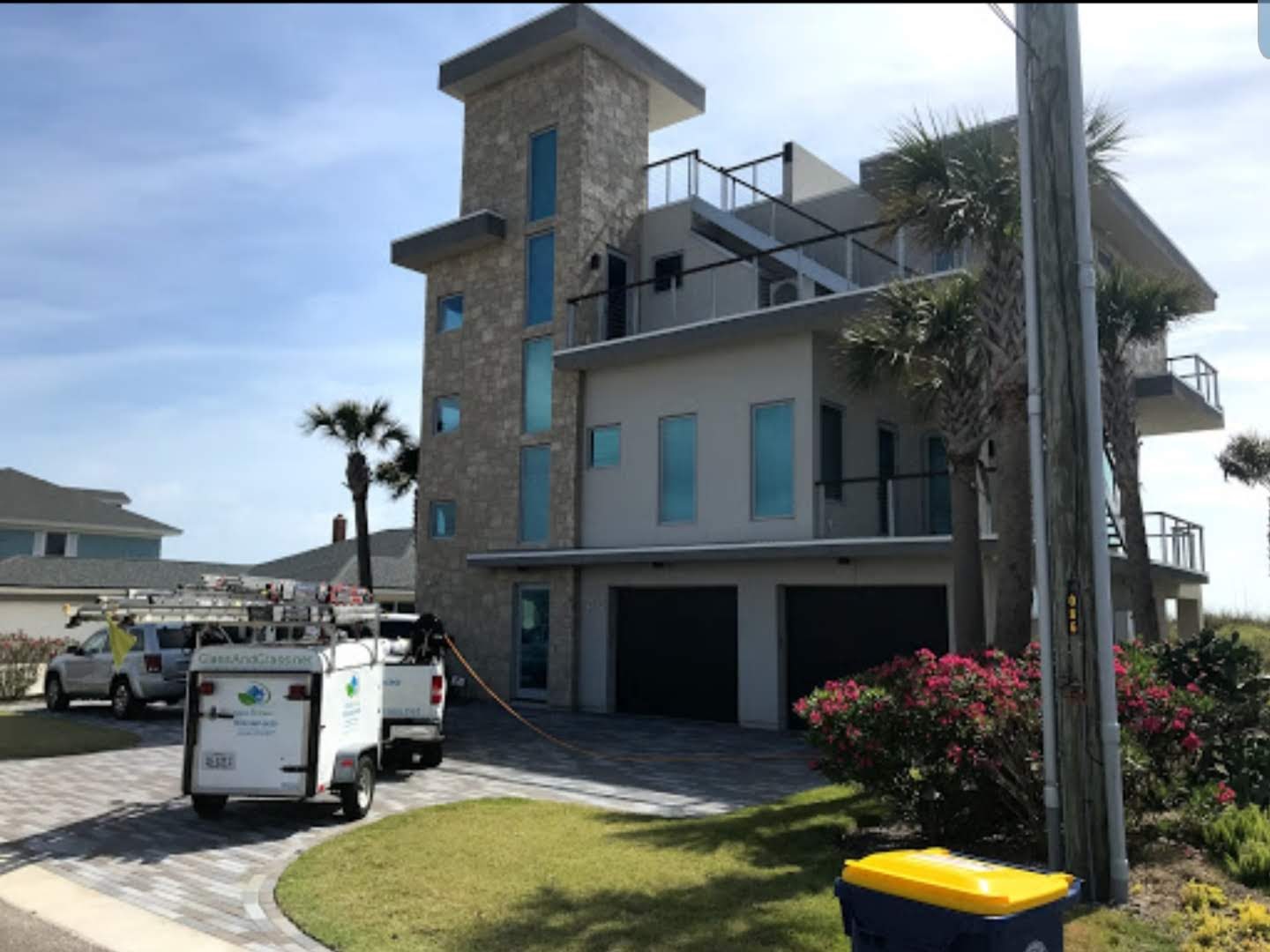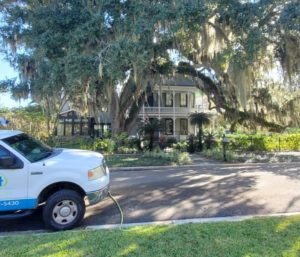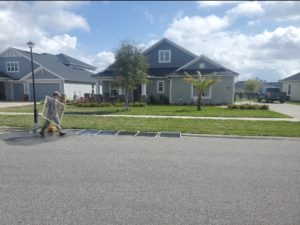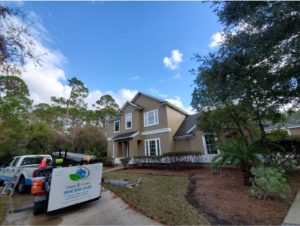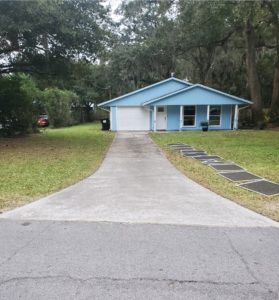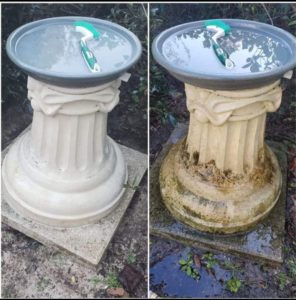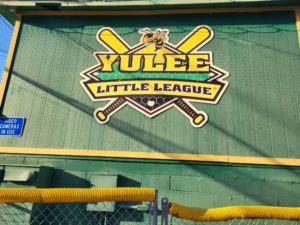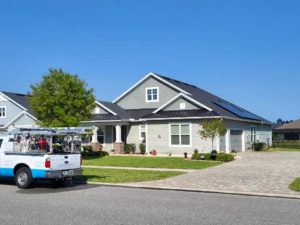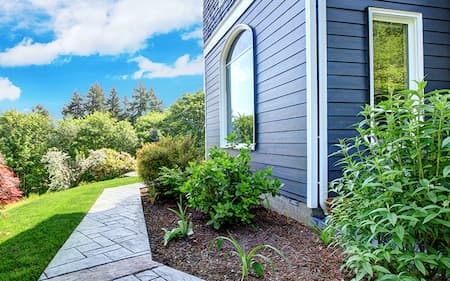Revive the Beauty of Your Brick Home: Master the Art of Pressure-Washing Like a Pro!
A well-maintained exterior adds to the beauty and charm of any home. However, over time, dirt, grime, and stains can leave your brick home looking unattractive and unkempt. Pressure washing is an effective way to restore the beauty of your home’s brick exterior and give your property a fresh new look. Although pressure washing may seem like an easy task, without proper knowledge, it can be a daunting task. In this blog post, we will share some tips and tricks to help you master the art of pressure washing brick like a pro.
Understand the basics of pressure washing
Before you start pressure washing, it’s essential to understand the basics of the process. Pressure washing uses high-pressure water to remove dirt, grime, and stains from various surfaces. The machines typically use a motor that pumps water at a high speed, which is released through a nozzle. Different types of nozzles can be used to adjust the spray pattern and pressure. It’s essential to choose the correct nozzle to avoid damaging the brick surface.
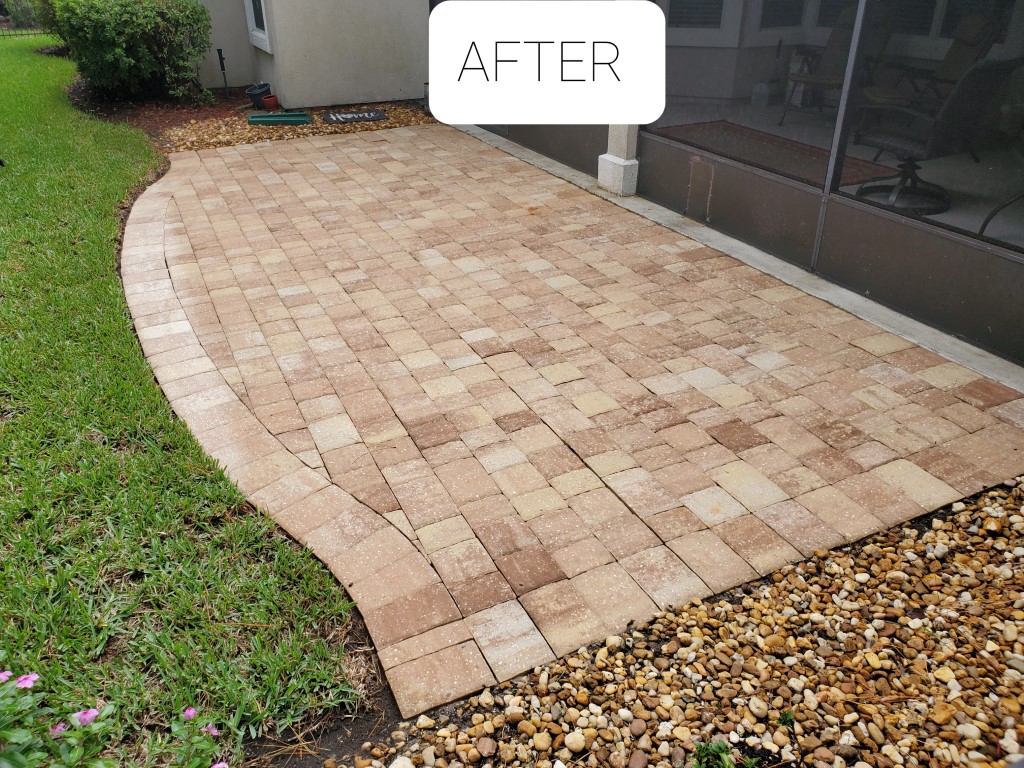
Ensuring Safety and Effectiveness
Pressure washing is an efficient and effective method for cleaning various surfaces, from driveways and sidewalks to siding and brick walls. However, it’s essential to prioritize safety and proper preparation to avoid accidents and achieve optimal results. In this guide, we’ll delve into the importance of safety equipment, surface preparation, and best practices for pressure washing.
Safety Equipment:
Before embarking on any pressure washing task, it’s crucial to gather the necessary safety equipment to protect yourself and others from potential hazards. High water pressure can cause injuries if not handled with care, so here’s a checklist of essential safety gear:
- Gloves: Wear sturdy gloves to protect your hands from the force of the water and any chemicals used in the cleaning process. Opt for gloves with good grip to maintain control of the pressure washer.
- Eye Protection: Safety goggles or glasses are vital to shield your eyes from flying debris, splashing water, and cleaning solutions. Choose goggles that fit snugly and provide full coverage to prevent any accidents.
- Non-slip Shoes: Select footwear with excellent traction to prevent slips and falls, especially on wet surfaces. Non-slip shoes or boots will help you maintain stability while maneuvering the pressure washer.
- Ear Protection: The noise generated by pressure washers can reach dangerous levels and cause hearing damage over time. Invest in quality ear protection such as earmuffs or earplugs to mitigate the risk of hearing loss.
Surface Preparation:
Proper preparation of the surface to be pressure washed is key to achieving satisfactory results and avoiding damage. Follow these steps to prepare the area effectively:
- Remove Loose Debris: Clear the surface of any loose debris such as dirt, leaves, and twigs using a broom or leaf blower. This step prevents clogging of the pressure washer nozzle and ensures a more thorough cleaning.
- Protect Surrounding Areas: Cover nearby plants, electrical outlets, light fixtures, and other delicate objects with plastic sheeting or tarps to shield them from water and cleaning agents. Secure the protective covering with tape or weights to prevent it from shifting during the cleaning process.
- Test Pressure Washer: Before starting the main cleaning task, test the pressure washer on a small, inconspicuous area to gauge the pressure and adjust the settings accordingly. This test helps prevent damage to sensitive surfaces such as brick or painted walls.
Best Practices for Pressure Washing:
Now that you’ve gathered the necessary safety equipment and prepared the surface, it’s time to start pressure washing. Follow these best practices to ensure a safe and effective cleaning process:
- Maintain Proper Distance: Keep a safe distance between the pressure washer nozzle and the surface being cleaned to avoid causing damage or injury. Start with a distance of about two feet and adjust as needed based on the surface type and pressure level.
- Use Correct Nozzle and Pressure Settings: Select the appropriate nozzle and pressure setting for the task at hand. A narrow nozzle delivers higher pressure for tough stains and grime, while a wider nozzle covers larger areas with less pressure. Refer to the manufacturer’s guidelines for recommended settings.
- Work in Sections: Divide the surface into manageable sections and clean one area at a time, overlapping slightly to ensure thorough coverage. This approach prevents streaks and missed spots while allowing you to maintain control over the pressure washer.
- Move Methodically: Use smooth, overlapping motions to move the pressure washer across the surface, following the natural grain or pattern if applicable. Avoid staying in one spot for too long, as this can cause uneven cleaning or damage to the surface.
- Rinse Thoroughly: After cleaning each section, thoroughly rinse the surface with clean water to remove any remaining dirt, detergent, or debris. Proper rinsing helps prevent streaking and ensures a pristine finish.
Pressure washing is a highly effective method for cleaning various surfaces, but it requires careful attention to safety and preparation. By equipping yourself with the necessary safety gear, preparing the surface properly, and following best practices during the cleaning process, you can achieve outstanding results while minimizing the risk of accidents or damage. Remember to always prioritize safety and take your time to ensure a job well done.
Follow the right technique
To achieve the best results in pressure washing your brick home, it’s vital to follow the right technique. Keep the nozzle at a suitable distance to avoid damaging the bricks, and direct the nozzle towards the surface at a 45-degree angle. Always use back and forth movements, overlapping each pass slightly. Keep in mind that the high-pressure water can cause damage to the brick if not used correctly. Therefore, avoid setting the pressure too high or getting too close to the surface.
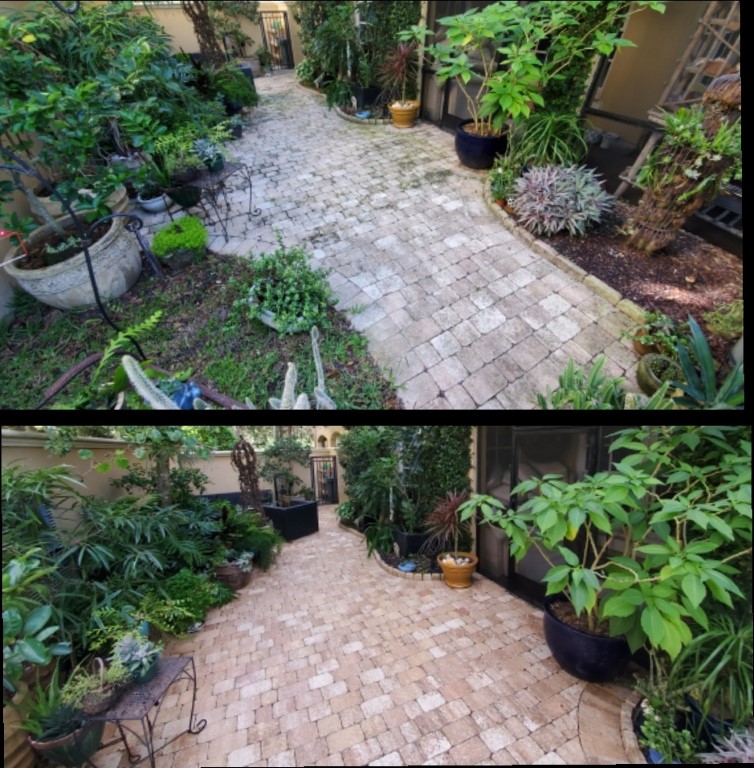
Finish with the right cleaning solution
In case you have stubborn stains on the brick surface, using a cleaning solution can be helpful. However, different types of stains require different cleaning solutions. To determine the right cleaner for the job, identify the type of stain on the brick surface and choose an appropriate cleaning solution. Always follow the instructions on the cleaning solution label to avoid any damage to the surface.
Pressure washing can be a daunting task, but with the right techniques, tools, and safety measures, it can be an easy and efficient process. Proper preparation and understanding of the appropriate technique can give you the best results. However, if you are unsure about your ability to perform this task, seek the help of a professional to ensure safety and proper results. Rejuvenating the brick exterior of your home can give it a fresh new look, and help maintain your property’s value for years to come.
https://www.google.com/maps?cid=664192561973241055

